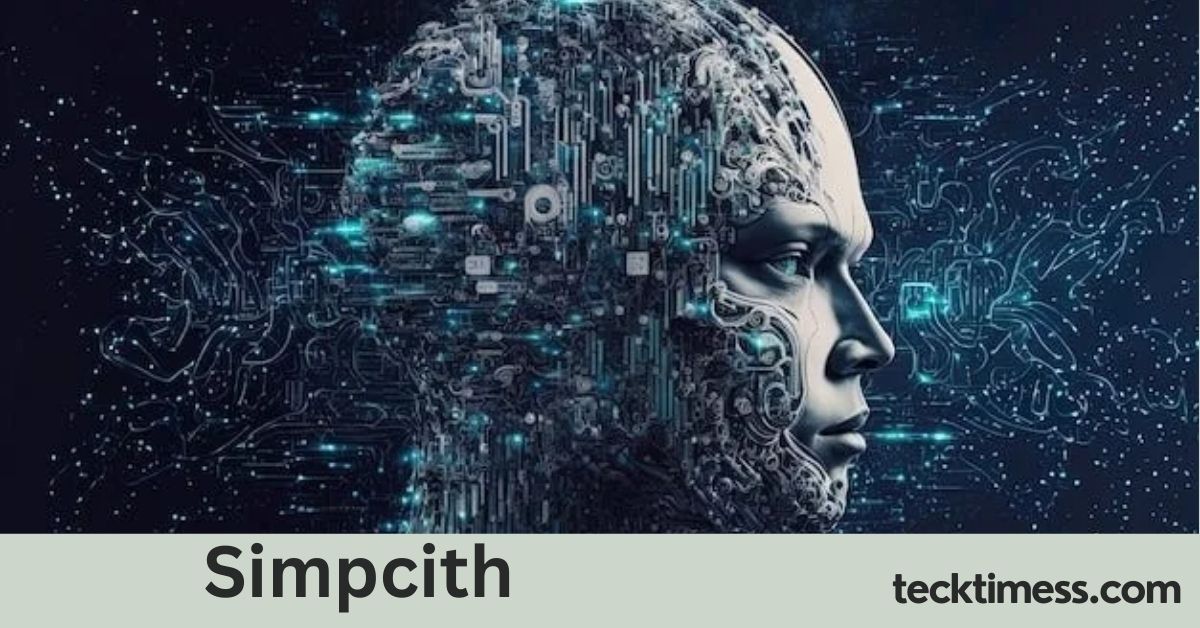In today’s fast-paced world, we often find ourselves overwhelmed by complexity. Whether it’s in our personal lives, at work, or in the products and services we use, simplicity has become a prized quality. This is where the concept of “simpcith” comes into play. But what exactly is simpcith, and how can it help us navigate an increasingly complex world? Let’s dive in and explore this fascinating approach to simplification.
What is Simpcith?
Simpcith is a powerful concept that combines the words “simplicity” and “pith” (which means the essential part or core of something). At its heart, simpcith is about simplifying things without losing their essential meaning or value. It’s an approach that seeks to strip away unnecessary complexity while preserving the core elements that truly matter.
Unlike oversimplification, which often results in a loss of important details or nuances, simpcith aims to find the perfect balance between simplicity and depth. It’s about making things easier to understand and use without sacrificing their fundamental purpose or quality.
The Importance of Simpcith in Modern Life
In our increasingly complex and fast-paced world, the ability to simplify without losing meaning has become more important than ever. Here’s why:
- Information Overload: We are bombarded with information from all directions. Simpcith helps us cut through the noise and focus on what’s truly important.
- Time Constraints: With busy schedules and competing demands on our time, we need ways to quickly grasp and act on information. Simpcith makes this possible.
- Cognitive Load: Our brains have limits on how much information they can process at once. Simpcith helps reduce cognitive load, making it easier to understand and remember key points.
- Effective Communication: In both personal and professional settings, clear and concise communication is crucial. Simpcith enables us to convey complex ideas in simpler, more digestible ways.
- User Experience: In product design and technology, simpcith can lead to more intuitive and user-friendly experiences.
Key Principles of Simpcith
To truly understand and apply simpcith, it’s important to grasp its core principles:
1. Focus on the Essential
The first step in simpcith is identifying the most important elements of whatever you’re trying to simplify. This requires a deep understanding of the subject matter and the ability to distinguish between what’s crucial and what’s optional.
2. Remove Unnecessary Complexity
Once you’ve identified the essential elements, the next step is to remove anything that doesn’t contribute to the core purpose or meaning. This might involve eliminating redundant information, streamlining processes, or simplifying language.
3. Maintain Clarity and Accuracy
While simplifying, it’s crucial to maintain clarity and accuracy. The goal is not to dumb things down, but to make them more accessible without losing important nuances or details.
4. Consider Context and Audience
Effective simpcith takes into account the context in which information will be used and the audience who will be using it. What’s simple for an expert might be complex for a novice, so it’s important to tailor your approach accordingly.
5. Iterate and Refine
Achieving the right balance of simplicity and depth often requires multiple iterations. Be prepared to refine your approach based on feedback and real-world application.
Simpcith in Action: Real-World Examples
To better understand how simpcith works in practice, let’s look at some real-world examples:
Technology: The iPhone Interface
Apple’s iPhone interface is a prime example of simpcith in action. Despite the complex technology behind it, the user interface is intuitive and easy to use. Apple achieved this by:
- Focusing on essential features that users need most
- Using simple, recognizable icons
- Implementing gesture-based controls that feel natural
- Hiding complex settings and options in submenus
The result is a powerful device that even young children and older adults can use with ease, without sacrificing advanced functionality for power users.
Communication: Einstein’s E=mc²
Albert Einstein’s famous equation, E=mc², is a perfect example of simpcith in scientific communication. It distills an incredibly complex concept (the relationship between energy and mass) into a simple, elegant formula that even non-physicists can grasp at a basic level.
Business: Amazon’s 1-Click Ordering
Amazon’s 1-Click ordering system simplified the online shopping process by allowing customers to make purchases with a single click. This streamlined approach removed unnecessary steps in the checkout process while maintaining the essential elements of a secure transaction.
Education: Khan Academy
Khan Academy has applied simpcith to education by breaking down complex subjects into short, easy-to-understand video lessons. This approach makes learning more accessible without oversimplifying the material.
The Benefits of Applying Simpcith
Adopting a simpcith approach can lead to numerous benefits:
- Improved Understanding: By focusing on core concepts and removing unnecessary complexity, simpcith makes it easier for people to grasp and retain information.
- Increased Efficiency: Simplified processes and systems often lead to greater efficiency and productivity.
- Better Decision Making: When information is presented clearly and concisely, it’s easier to make informed decisions quickly.
- Enhanced User Experience: Products and services designed with simpcith in mind tend to be more user-friendly and enjoyable to use.
- Reduced Errors: Simplifying complex systems can help reduce the likelihood of mistakes and misunderstandings.
- Broader Accessibility: By making information and systems more approachable, simpcith can help make them accessible to a wider audience.
Challenges in Applying Simpcith
While the benefits of simpcith are clear, implementing it can be challenging. Here are some common obstacles:
1. Resistance to Change
People and organizations often resist simplification efforts, especially if they’re accustomed to existing complex systems or processes.
2. Fear of Oversimplification
There’s a fine line between helpful simplification and oversimplification that loses important nuances. Finding this balance can be difficult.
3. Diverse Audience Needs
Different users may have different levels of expertise or different needs, making it challenging to create a one-size-fits-all simplified solution.
4. Time and Resource Constraints
Simplifying complex systems or information often requires significant time and resources upfront, even if it leads to long-term benefits.
5. Regulatory or Legal Requirements
In some fields, regulatory or legal requirements may limit how much simplification is possible.
How to Develop Your Simpcith Skills
Becoming proficient in simpcith takes practice, but here are some steps you can take to improve your skills:
- Study Clear Communicators: Pay attention to people who explain complex topics well. What techniques do they use?
- Practice Explaining Complex Ideas: Try explaining complicated concepts to someone unfamiliar with the topic. This will help you identify the most important elements.
- Seek Feedback: After simplifying something, ask others if your simplified version is clear and retains the essential meaning.
- Read Widely: The more you understand about various topics, the better equipped you’ll be to simplify them effectively.
- Embrace Minimalism: Apply minimalist principles to your life and work. This can help you develop a mindset focused on the essential.
- Learn Information Design: Study how information can be visually presented to enhance understanding.
- Practice Active Listening: Improving your listening skills can help you better understand what information is most important to others.
Simpcith in Different Fields
The concept of simpcith can be applied across various fields and industries:
Business and Management
In the business world, simpcith can lead to streamlined processes, clearer communication, and more effective decision-making. Companies that embrace simpcith often see improvements in productivity and customer satisfaction.
Technology and Design
Tech companies and designers use simpcith principles to create user-friendly interfaces and products. This approach can lead to increased user adoption and satisfaction.
Education
Educators can use simpcith to break down complex subjects into more digestible pieces, making learning more accessible and engaging for students.
Healthcare
In healthcare, simpcith can help in creating clearer patient instructions, simplifying medical jargon for better patient understanding, and streamlining administrative processes.
Government and Public Policy
Governments can apply simpcith to make laws and regulations more understandable to the general public, and to simplify bureaucratic processes.
The Future of Simpcith
As our world continues to grow more complex, the importance of simpcith is likely to increase. We can expect to see:
- More emphasis on simpcith in education and professional training
- Increased use of AI and machine learning to help simplify complex data and processes
- Growing demand for professionals skilled in applying simpcith principles
- Continued focus on user experience and interface design in technology
- More research into cognitive load and how simplification affects understanding and decision-making
Conclusion
In a world that often seems to be growing more complex by the day, simpcith offers a valuable approach to making things simpler without losing their essence. By focusing on what’s truly important, removing unnecessary complexity, and maintaining clarity and accuracy, we can create solutions that are both powerful and accessible.
Whether you’re a business leader, educator, designer, or simply someone looking to communicate more effectively, developing your simpcith skills can lead to significant improvements in how you work and interact with the world around you.
Remember, the goal of simpcith isn’t to oversimplify or dumb things down. Instead, it’s about finding that sweet spot where simplicity and depth come together to create something that’s easy to understand and use, while still retaining its full value and meaning.
As we move forward, let’s embrace the challenge of making our complex world a little bit simpler, one step at a time. After all, in the words often attributed to Leonardo da Vinci, “Simplicity is the ultimate sophistication.”
FAQs About Simpcith
How is simpcith different from simple minimalism?
While both simpcith and minimalism focus on simplification, simpcith places a stronger emphasis on retaining essential meaning and functionality. Minimalism might remove elements for aesthetic reasons, while simpcith only removes what doesn’t contribute to the core purpose.
Can simpcith be applied to personal life?
Absolutely! You can apply simpcith principles to declutter your home, simplify your schedule, or even clarify your personal goals and values.
Is simpcith always the best approach?
While simpcith is often beneficial, there are situations where complexity is necessary or even desirable. It’s important to consider the context and audience when deciding whether to apply simpcith.
How can I tell if I’ve oversimplified something?
If important nuances or details are lost, or if the simplified version no longer serves its original purpose effectively, you may have oversimplified. Always test your simplified version with your intended audience.
Are there any tools that can help with simpcith?
While simpcith is primarily a conceptual approach, there are tools that can assist in the process, such as mind mapping software for organizing ideas, readability analyzers for simplifying text, and user testing platforms for evaluating simplified designs or processes.





